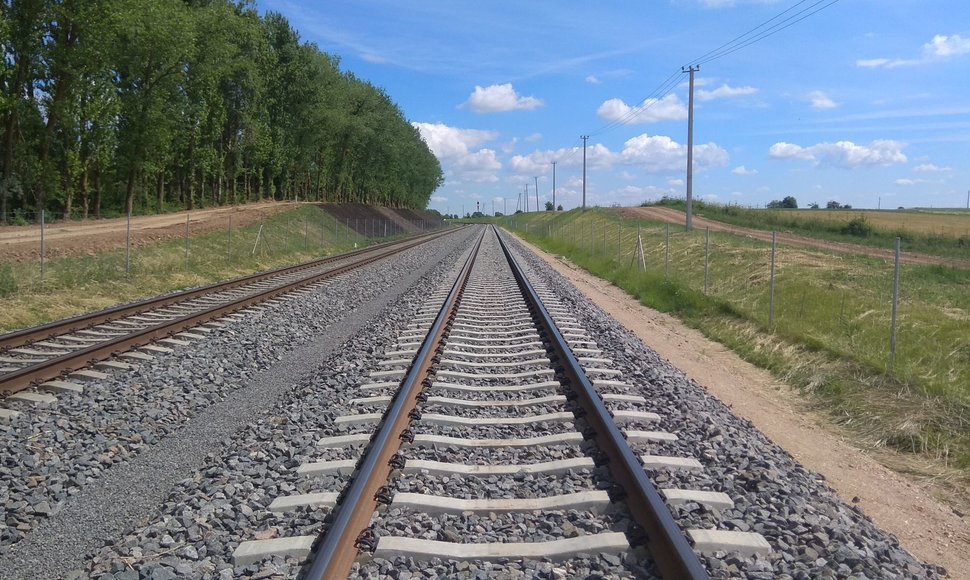“The Rail Baltica stretch from Kaunas to the Lithuanian-Latvian border will in many areas be laid where there was previously no other infrastructure and no land works. So we must be mindful that areas of value and importance to archaeologists and Lithuanian history are not damaged. Harmonious development is one of our main priorities in laying the European standard gauge railway and so, prior to every development stage, not only construction engineering studies, but also all other necessary ones are carried out,” LTG Infra CEO Karolis Sankovski says.
The exploratory archaeological research was undertaken on the upcoming Rail Baltica railway stretch between Kaunas and the Lithuanian-Latvian border based on a contract signed already in May last year. At the same time, a contract was signed regarding detailed archaeological studies, but upon carrying out a survey, it was found that a far larger area than planned had to be investigated.
The contract from 2019 indicates that after exploratory archaeological research, a detailed inspection will be necessary for a territory no larger than 1,700m2. However, following the exploratory archaeological research, more areas of potential archaeological value were found and so the area of detailed study increased to 8,500m2.
According to Zenonas Bubonis, the expert coordinating the researchers’ work and director of VšĮ Kultūros Paveldo Išsaugojimo Pajėgos, during the surveying of the future railway stretch, a number of ancient human settlements were found.
“We are already concluding excavations at the 1,500m2 Kurmagala (Jonava region) ancient settlement. During this, we discovered a cultural layer from the first half of the first millennium AD, with striped ceramics from the period, remains of iron metallurgical items, tools (awls, knives, spindles) and jewellery (pins, rings). We are currently preparing for detailed archaeological studies of the Mikainiai and Varpiai (Jonava region) ancient settlements,” Z. Bubonis explains.
Over the coming 18 months, 6,900m2 of space with cultural layers will be studied. During previous studies of the Mikainiai ancient settlement, pits and a cultural layer with ceramics fragments and pieces of slag were discovered that date back to the first millennium AD, which indicates this having been an iron processing location. In Varpiai ancient settlement on the Neris riverbank, a cultural layer was found with brown clay masses and large quantities of crushed granite, ceramics fragments and flint splinters. This settlement’s cultural layer dates back to the stone age (neolith).
“The cultural layers that enter the construction zone of Rail Baltica will be studied during detailed archaeological digs so as to not be destroyed during construction works. The findings will contribute to the stocks of the country’s museums,” Z. Bubonis noted.
Archaeological studies are divided into archaeological surveying, exploratory archaeological research and detailed archaeological studies. During surveying, through the use of metal detectors, other equipment and historical documents, the location will be evaluated. Locations identified during archaeological surveying are then sites of exploratory archaeological research, during which specific types of digging and boring are performed to discover new archaeological heritage objects, localise them, establish the state of the cultural layer or archaeological heritage objects, their boundaries and other parameters. Detailed archaeological studies are wide scope studies, which aim to gather detailed data on the objects being investigated.
Rail Baltica is the largest railway infrastructure construction project in the Baltic states’ history. During its implementation, an electrified European gauge railway line will be laid, connecting Warsaw, Kaunas, Vilnius, Panevėžys, Riga, Tallinn and Pärnu.
The combined length of the Rail Baltica railway line in the Baltic States is a total of 870km, with 392 km being in Lithuania, 265 – in Latvia and 213 in Estonia.
In Lithuania, the European gauge railway line will stretch from the Polish-Lithuanian state border to the Lithuanian-Latvian state border. In Kaunas city, passenger trains will be directed to Kaunas passenger railway station, while freight trains will head through Rokai and directly via Palemonas toward Riga and Tallinn. The Rail Baltica project also has a further Kaunas-Vilnius railway stretch planned.
The project is valued at EUR 5.8 billion which is the largest investment aimed at improving mobility and travel opportunities, developing business, tourism and goods exchange in the region.
Other than this company, the works valued at 1.6 million euro (VAT included) will also be performed by the companies Statybų Archeologija and Kultūros Vertybių Paieška. LTG Infra has signed two contracts with them, the company reports.












